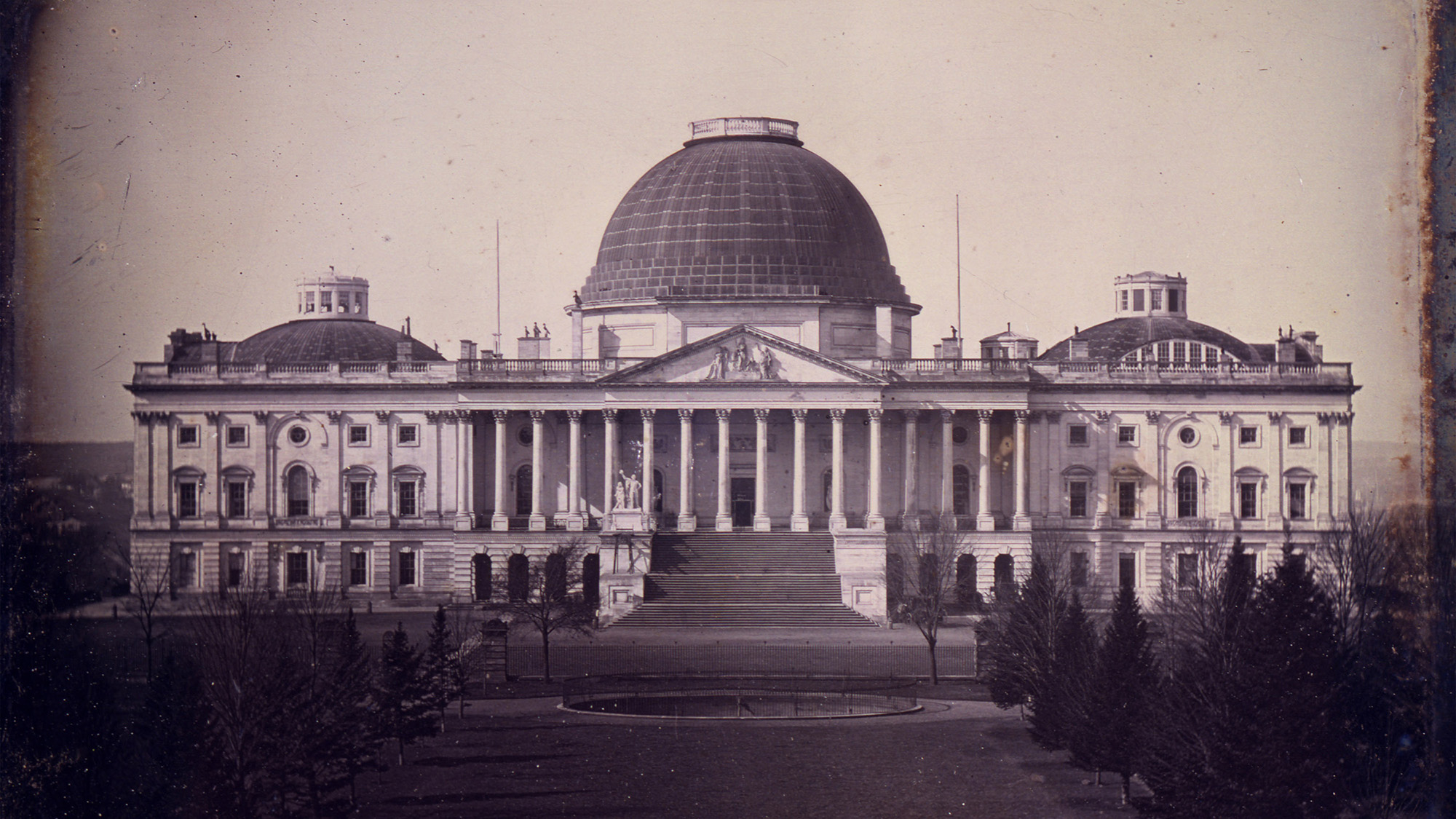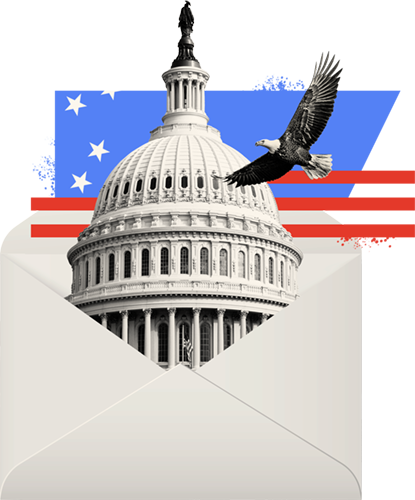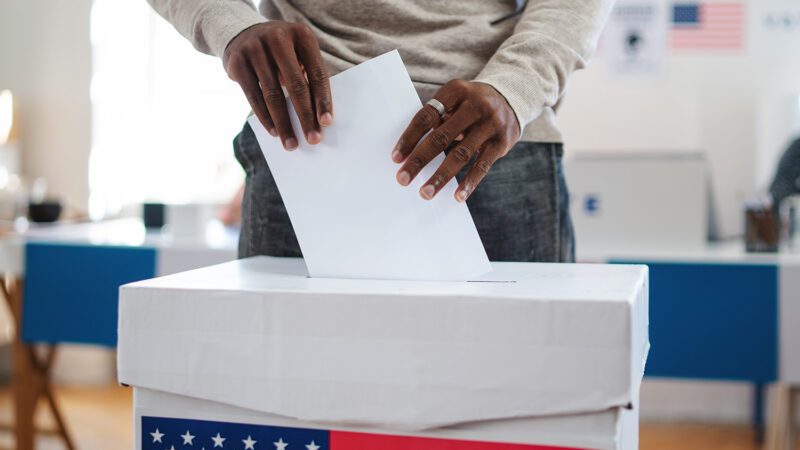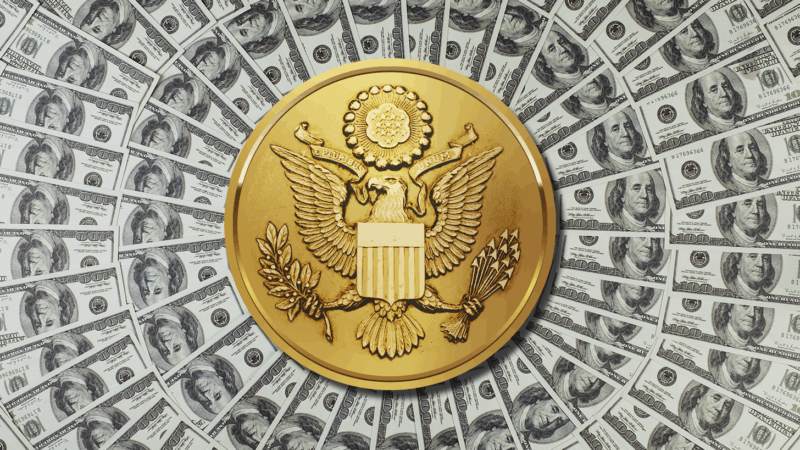Before joining Protect Democracy, Cameron was an associate at Gibson, Dunn & Crutcher and served as a clerk on the Fifth Circuit Court of Appeals.
The Ku Klux Klan Act of 1871, explained
- December 5, 2023

Frustrated by the federal government’s persistent inability to put a stop to white supremacist terrorism by the Ku Klux Klan, Congress passed the Ku Klux Klan Act of 1871 to put an end to the Klan’s reign of terror. The bill used nearly all of Congress’s constitutional powers to enact a comprehensive strategy to respond to the Klan’s coordinated political violence and intimidation.
- Section 1. (now codified at 42 U.S.C. § 1983) Possibly the single most important statutory provision in modern American civil rights law, this section allowed individuals to sue in federal court when state and local officials violate federal law.
- Section 2. This section banned a host of private conspiracies in which the Klan engaged — such as insurrection, witness intimidation, and political intimidation — that interfered with newly emancipated Americans’ civil rights.
- Sections 3-4. This section gave the president the power to call on the Army, Navy, and militia against any local rebellions and suspend habeas corpus.
- Section 5. This section allowed federal judges to keep Klan conspirators off juries.
- Section 6. (now codified at 42 U.S.C. § 1986) This section required everyone — public servants and private citizens alike — that knew about an illegal conspiracy to interfere with civil rights banned by Section 2 of the Act to take actions to prevent and minimize the effects of the illegal conspiracy, and made them liable in court for a negligent or intentional failure not to.

Want more Democracy Insights?Subscribe to our weekly newsletter
This provision was specifically designed to ensure that Southern law enforcement officers would help protect all Americans from political violence. An exchange during the House’s consideration of the provision between Representative Shellabarger of Ohio (who introduced the Klan Act in the House), Representative Willard, and Representative Bingham (the principal framer of the Fourteenth Amendment) is demonstrative:
Mr. Willard: I desire to ask the gentleman a question just there.
Mr. Shellabarger: Very well; I will hear the gentleman.
Mr. Willard: I understand that under the provisions of [42 U.S.C. § 1986], if an individual receives the notice we frequently read of being sent to these Union men that he must leave the district or be killed or whipped . . . if he should go to the sheriff of the county or to his neighbors and give information of that, and ask them to protect him, they would be liable.
Mr. Shellabarger: They would be liable.
Mr. Bingham: So they ought to be.
The Klan Act Falls into Obscurity
After the bill’s passage, President Grant and the Department of Justice set out to break the power of the Klan in the South, and they largely succeeded. Attorney General Amos Ackerman oversaw the arrest and conviction of hundreds of Klansmen, and by 1872-73 the Klan had been effectively crushed. (Racist white supremacist terrorism would continue throughout the South, however). It wasn’t until the Klan’s 1915 re-establishment by William J. Simmons that the Klan would reemerge as a powerful force in American politics.
With the end of Reconstruction, Klan Act litigation precipitously declined — a trend that accelerated further after the Supreme Court found some (but not all) portions of the Klan Act’s criminal enforcement provisions unconstitutional, and Congress repealed at least one other. With the exception of Section 1 of the Klan Act (aka 42 U.S.C. § 1983), the remaining provisions of the Klan Act largely faded into obscurity for over a century.
Klan Act litigation was quite rare from 1880-2016. That’s not to say that the provision was never used. Civil rights lawyers occasionally invoked the provision to protect voter registration and demand protection from the Klan and the American Nazi Party. In the 1960s, a Freedom Rider used it against FBI agents for failing to protect him in the face of known risks of white supremacist violence in Alabama.
A Recent Resurgence in Klan Act Lawsuits
With the current increase in political violence and intimidation, civil rights lawyers are again dusting off provisions of the Klan Act to stop organized political intimidation and violence. Victims of the “Unite the Right” rally in Charlottesville have used the Act to sue neo-Nazis. Members of Congress and injured Capitol Police officers have filed Klan Act suits against the alleged perpetrators of the January 6 attacks. Virginians falsely accused of voter fraud used the Act to sue a former member of the Pence-Kobach “voter fraud” commission and his non-profit for voter intimidation. And a group of voters and a non-partisan, non-profit have used the Act to successfully sue two individuals that circulated a robocall targeted at Black neighborhoods with misleading messages that appeared to have been crafted to dissuade tens of thousands of voters across the United States from voting by mail.
Related Content
It can happen here.
We can stop it.
Defeating authoritarianism is going to take all of us. Everyone and every institution has a role to play. Together, we can protect democracy.
Donate
Sign Up for Updates Sign Up for Updates
Explore Careers Explore Careers
How to Protect Democracy How to Protect Democracy


